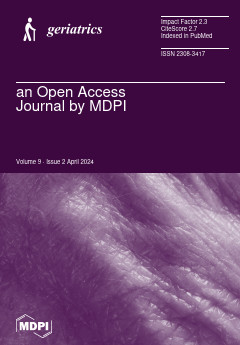Introduction: Hip fractures pose a significant challenge for older individuals given their high incidence and one-year mortality rate. The objective of this study was to identify the primary predictors of one-year mortality in older adults hospitalized for hip fractures.
Methods: We conducted a retrospective cohort study involving adults aged 70 years or older who were admitted to the hospital for fragility hip fractures between 1 January 2014 and 31 December 2021. A total of 3229 patients were recruited, with 846 (26.2%) experiencing one-year mortality.
Results: Respiratory complications (HR 2.42, 95%CI 1.42–4.14;
p = 0.001) were the most significant predictors of one-year mortality, followed by hospital readmission (HR 1.96, 95%CI 1.66–2.32;
p < 0.001), the male sex (HR 1.88, 95%CI 1.46–2.32;
p < 0.001), cardiac complications (HR 1.88, 95%CI 1.46–2.32;
p < 0.001), and a diagnosis of dementia at admission (HR 1.37, 95%CI 1.13–1.66;
p = 0.001). The Charlson Index and the American Society of Anesthesiologists physical status classification system also significantly increased the mortality risk. Conversely, higher hemoglobin levels at admission and elevated albumin at discharge significantly reduced the mortality risk.
Conclusions: The one-year mortality rate is substantial in older adults with hip fractures who are admitted to an orthogeriatric unit. The appropriate management of anemia, nutritional disorders, and comorbidity at admission and during the follow-up could potentially mitigate long-term mortality after hip fractures.
Full article






